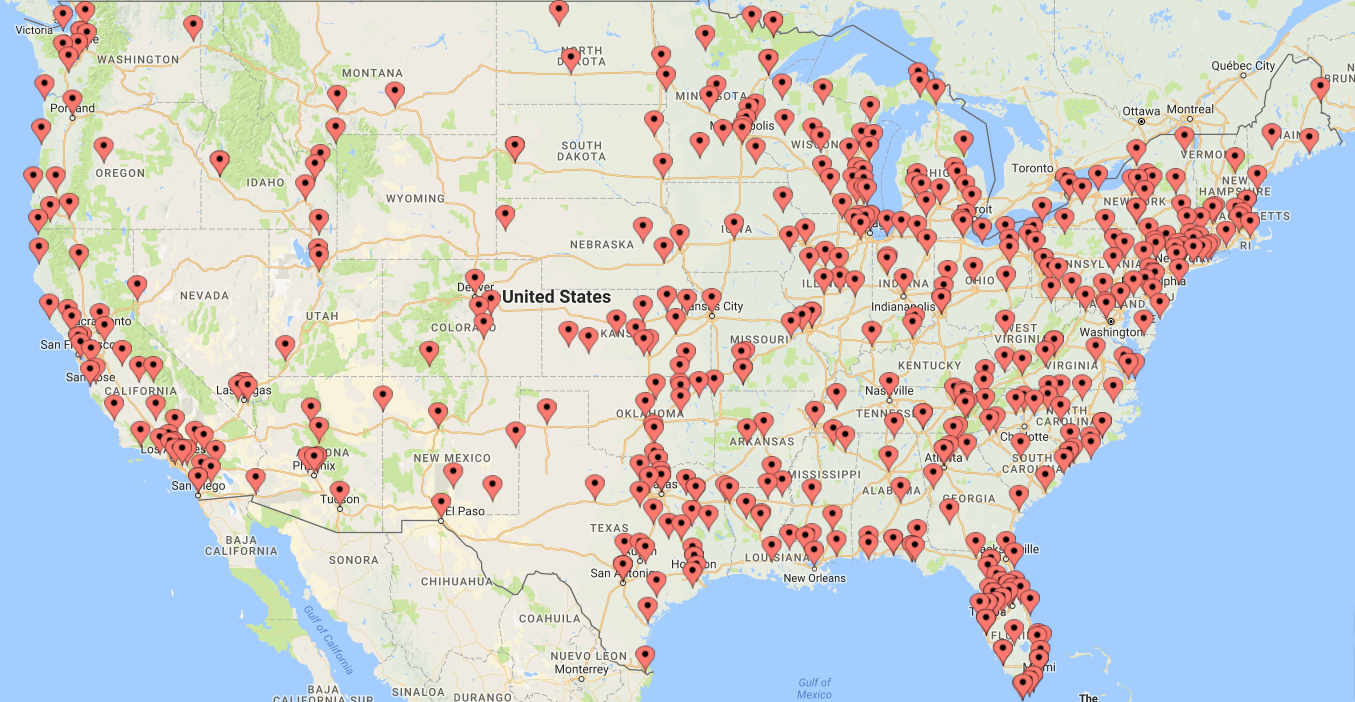
How Many Zoos Are There in the United States?
There are fewer zoos than you would expect in the United States: as of August 2017, there were only approximately 500 zoological facilities in the country.
How Many Zoos Are There In The United States?
November 24, 2017 - Rachel Garner
There are fewer zoos than you would expect in the United States. It’s commonly thought that there are over two thousand zoos in the country, but that number actually derives from an error in a National Geographic article almost fifteen years ago. The real number is actually much, much lower: data compiled in August 2017 indicates that were only approximately 500 zoological facilities in the country - a number which includes both zoos and aquariums.
How Do You Count Zoos?
Counting "zoological businesses" requires starting with a certain amount of preexisting information: a definition of the business type specific enough to differentiate zoological facilities from similar entities like sanctuaries and petting zoos, yet broad enough to encompass all possible permutations of the business type; a data collection method that is thorough enough to identify potential candidates; and an understanding that the number of animal-related businesses open to the public is always in flux.
Methodology
Defining a Zoological Facility
There does not appear to be an extant definition of a what makes a zoo a zoo. Dictionary definitions of zoological facilities are overly broad and encompass many non-zoo business types, and the definitions used by various entities in animal exhibition-related fields mostly focus on differentiating different subcategories of zoos from one another. As a result, the first step required for counting the zoos in the United States was to create a working definition of what combination of characteristics constituted a zoo business. Developing this definition involved delineating the characteristics of business types similar to zoos. The different types of businesses exhibiting animals under USDA licensure were explicitly defined and categorized; you can read more about that effort here).
For the purposes of identifying a zoological facility, the working definition chosen was:
“A business that maintains a stationary collection of exotic animals for the primary purpose of public exhibition.”
In addition, a number of defining characteristics were identified in order to allow for better identification of businesses that were not obviously operating (or advertising themselves) as zoos. These were:
Majority of animal collection is exotic animals
Owns and/or borrows animals
May trade commercially in animals
Open to the public
Licensed by the USDA if exhibiting mammals
Animals are primarily viewed by the public in appropriate, permanent, primary enclosures
May be a zoo or aquarium
Since many animal sanctuaries exhibit their collection animals to the public, and these facilities are often confused with zoos, an equally thorough set of defining characteristics for sanctuaries were identified in order to facilitate accurate categorization. You can read more about that breakdown here.
Data Collection and Categorization
The easiest way to identify and count the majority of the zoo businesses in the country was to utilize USDA records as a primary data set. Since most zoo businesses have mammals in their collections, they're required to hold a USDA Class C exhibitor’s license. Two sets of USDA records from different years were cross-referenced to identify all the active Class C licensees in the country - one from December 2015 and one from August 2017, for a total of 2416 active licenses. Each licensee was then categorized as a zoological institution or one of the other 20 possible categories of animal exhibitors, based on careful examination of the entity’s website and social media, as well as any other available information sources. This process resulted in the identification of 468 zoological facilities.
However, simply indexing USDA licensees did not provide a complete database of all zoological facilities in the country. Facilities with collections comprising only reptiles, birds or fish - a category that includes aquariums such as the Ripley’s chain as well as alligator attractions and many small exotic bird collections - are not required to be licensed by the USDA and therefore were not included in the data set that was categorized. Unfortunately it was necessary to identify these facilities through less rigorous methods, as no better option was apparent: potential non-mammal zoological institutions were discovered through word of mouth and extensive googling. While this process allowed for the identification and categorization of quite a number of animal exhibition-related businesses, it was not exhaustive; this is one of the reasons why the resulting number of zoos found through the project is listed as an approximation.
Dealing With Flux
The other reason that any published number of zoos in the United States will always be approximate is that animal-related businesses are never static - they lose licensure, close, or change missions on a regular basis. In the three months since the data set was pulled in August of 2017, a casual survey has identified at least one zoo closure, multiple zoo businesses that moved away from exotics, and one exotic animal retail business that plans to transition into a full-fledged zoological facility. There are likely more facilities that have undergone changes in the interim that should be reflected in the numbers of zoological facilities, however they are not always easily identified. As such, it is necessary to speak of zoo numbers only as approximations. Zoological facilities with mammals can be identified accurately, but truly exact numbers will require the creation of a better way to count those zoos external to federal licensure.
Not How Many, But How Few
What's truly important about counting zoos - more than producing an exact number - is understanding how few of them there actually are in the United States and the consequences of that. The smaller the community of zoological facilities, the more it will be taxed by events that impact the ability of a single facility to function (such as a natural disaster) and the more vulnerable it will be to the fallout from legislation that regulates certain aspects of zoo businesses - or even entire facilities - out of existence. The number of extant zoos and the spaces they hold for endangered animals is a major limiting factor on the long-term success of conservation programs. The number of zoological facilities in the United States directly affects the viability of the industry in the future - and with it, the stewardship of the animals under zoological care.


